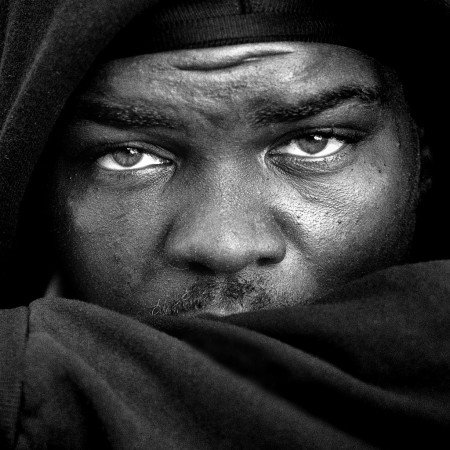The ‘Black Poor’ was the name given in the late 18th century to poor residents of London who were of Black ancestry. The Black Poor had diverse origins. Historians estimate that the black population of London was between 5,000 and 10,000 in the late eighteenth century. While Great Britain was reaping profits from its involvement in the slave trade, a black community grew in London during this time. Concerns were raised about black people living in London as early as 1596, when Queen Elizabeth I complained about ‘Blackamoores’ cluttering up the streets of the kingdom, and issued a Royal Proclamation ordering the removal of “those kind of people”. There is no evidence that the Queen’s orders were carried out and the black community continued to flourish around Mile End and Paddington.
The numbers of black Londoners were regularly supplemented by runaway slaves. One fled Benjamin Franklin’s English family home in 1760. As early as 1764, a newspaper reported that scores of blacks met up at a pub in Fleet Street for a night of musical entertainment. There were numerous balls and “bawdy-houses” attended by black people throughout the 1760s and 1770s. One of them was Soubise, the favourite servant of the elderly Duchess of Queensbury, who was tutored in fencing and other gentlemanly skills, rumoured to be as a
reward for special services! Writing in 1769, a judge named John Fielding suggested that, “there are already a great number of black men and women who have made themselves so troublesome and dangerous to the families who brought them over as to get themselves discharged.”
The increasing number of black poor on the streets of London led to Jonas Hanway setting up the Committee for the Relief of the Black Poor in 1786. Abolitionist Granville Sharp personally provided assistance to about 400 black Londoners. Black letter-writers to the newspapers often thanked Sharp for his support. Most of the black people in the country were men. In London alone, among those receiving government assistance for the poor in 1786, there were 678 black men compared to 233 black women. It is not surprising, then, that most black men found white wives and partners.
A Sierra Leone Resettlement Scheme was formulated in 1786 because humanitarians like Granville Sharp saw it as a means of showing the pro-slavery lobby that black people were the intellectual equal of their white counterparts, and could contribute towards the running of the new colony of Sierra Leone. Government officials, including Prime Minister William Pitt the Younger, became involved because they saw the Scheme as a useful tool to remove the black poor from the streets of London, and repatriate them to Africa. The Scheme initially received strong support from black Londoners, who discussed it enthusiastically with Sharp.
Hanway’s Committee identified 250 black Londoners in need of assistance, and asked for donations to send them, “to the places from whence they were taken.” Among the black Londoners who actually turned up for this first voyage to Sierra Leone were a substantial number of Black Pioneers from the American War of Independence. There is very little evidence about where most of the black passengers were born, but historians estimate that about half the black Londoners who went on this first expedition to Sierra Leone were from America. Including these Black Pioneers, according to the organisers, about 700 black Londoners signed up to the Scheme. However, when the ships arrived in the Thames in October 1786 to collect those black Londoners who were ready to sail for Sierra Leone, a newspaper at the time noted that, “of the seven hundred poor Black (sic) who had signed an engagement to go to a Free Settlement on the coast of Africa…four hundred of them had declined the embarkation, and came on shore again.” The black community of London had clearly figured out the motives of the British government, and large numbers of them stayed away, when it was time to sail.
So, if only a few hundred left the shores of England for Sierra Leone, what happened to the thousands of black people, mainly men, who remained in England? Eventually, as a result of generations of intermarriage between black and whites, the community of black Londoners was assimilated and ceased to be a visible presence by the time Victoria became queen in 1837. It is very likely that a lot of white Londoners today have black blood in their veins. Of the few hundred that left for Sierra Leone, their descendants are part of the ethnic group in Sierra Leone known as ‘Krios’.
By Michael Sivapragasam, Historian
FURTHER READING
Michael Sivapragasam, Why Did Black Londoners not join the Sierra Leone Resettlement Scheme 1783-1815? (London: Open University, 2013),
